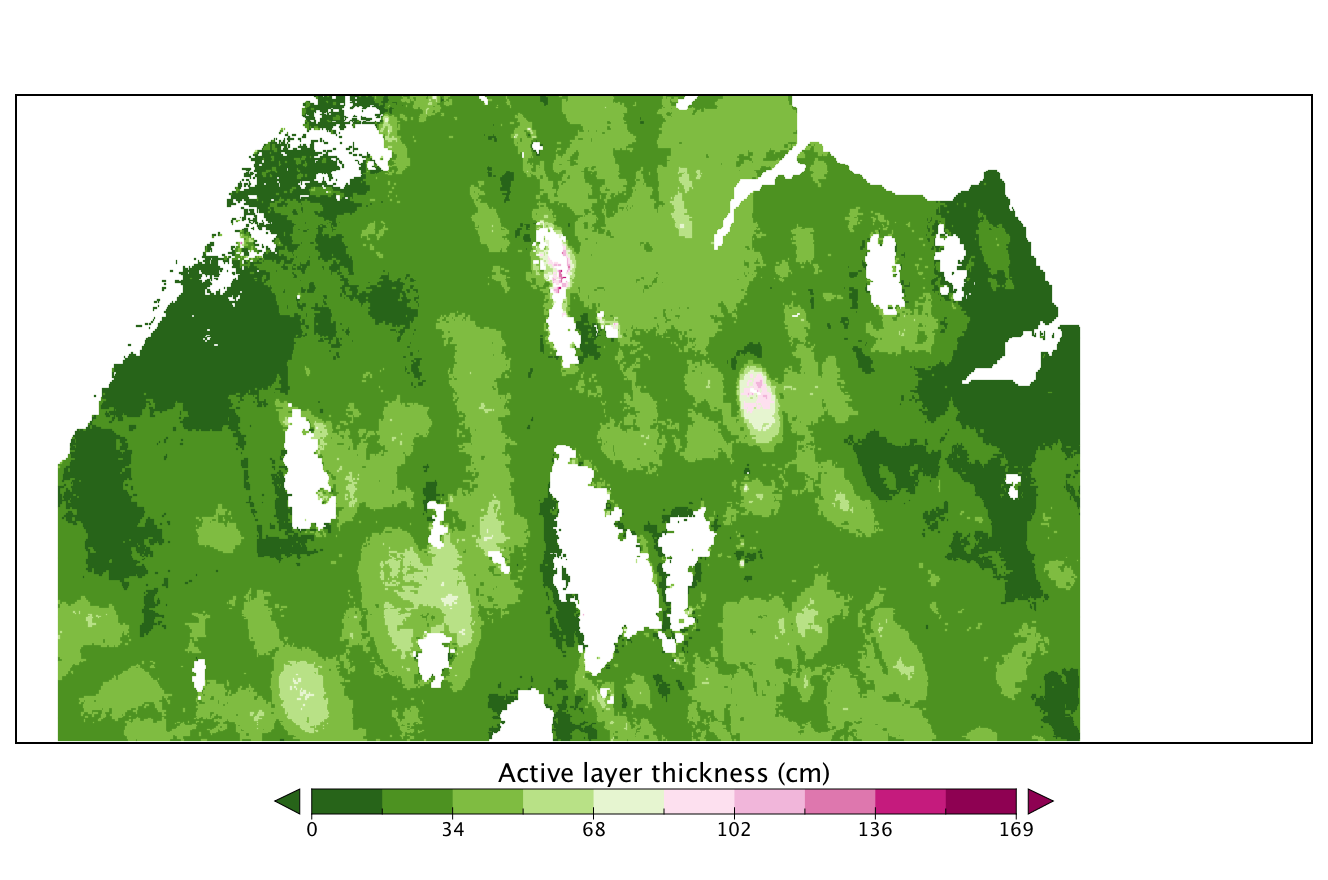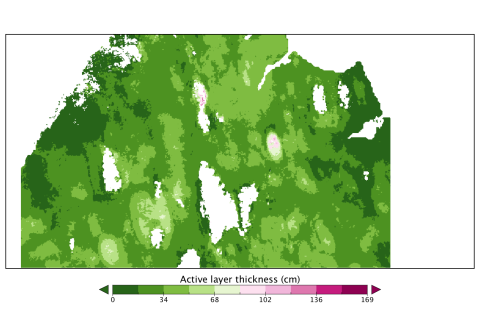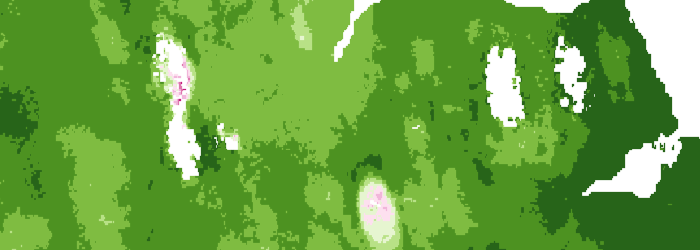In Arctic soils, the "active layer" is that portion of the soil above the permafrost that thaws and freezes seasonally. It plays an important role in cold regions because most ecological, hydrological, and biogeochemical activity takes place within it.
Active layer thickness (ALT) is a critical parameter for monitoring the status of permafrost. In situ methods such as probing, temperature sensors, and other ground-based observation methods are labor intensive and difficult to document at kilometer spatial extents.
Two recent papers discuss the use of remote-sensing methods as effective methods to measure and monitor ALT over large areas on the Arctic coastal plain:
Schaefer, K.; Liu, L.; Parsekian, A.; Jafarov, E.; Chen, A.; Zhang, T.; Gusmeroli, A.; Panda, S.; Zebker, H.A.; Schaefer, T. Remotely Sensed Active Layer Thickness (ReSALT) at Barrow, Alaska Using Interferometric Synthetic Aperture Radar. Remote Sens. 2015, 7, 3735-3759.
Albert Chen, Andrew D. Parsekian, Kevin Schaefer, Elchin Jafarov, Santosh Panda, Lin Liu, Tingjun Zhang, and Howard Zebker (2016). Ground-penetrating radar-derived measurements of active-layer thickness on the landscape scale with sparse calibration at Toolik and Happy Valley, Alaska. GEOPHYSICS, 81(2), H9-H19.
Data supporting these papers are archived at the Oak Ridge National Laboratory's Distributed Active Archive Center (ORNL DAAC) and are part of The Arctic-Boreal Vulnerability Experiment (ABoVE), a NASA Terrestrial Ecology Program field campaign. ABoVE seeks a better understanding of the vulnerability and resilience of ecosystems and society to this changing environment in the Arctic and Boreal region.
ABoVE active layer thickness data archived at the ORNL DAAC include:
Jafarov, E., A. Parsekian, K. Schaefer, L. Liu, A. Chen, S.K. Panda, and T. Zhang. 2016. Pre-ABoVE: Active Layer Thickness and Soil Water Content, Barrow, Alaska, 2013. ORNL DAAC, Oak Ridge, Tennessee, USA. http://dx.doi.org/10.3334/ORNLDAAC/1355
Chen, A., A. Parsekian, K. Schaefer, E. Jafarov, S.K. Panda, L. Liu, T. Zhang, and H.A. Zebker. 2015. Pre-ABoVE: Ground-penetrating Radar Measurements of ALT on the Alaska North Slope. ORNL DAAC, Oak Ridge, Tennessee, USA. http://dx.doi.org/10.3334/ORNLDAAC/1265
Liu, L., K. Schaefer, A. Chen, A. Gusmeroli, E. Jafarov, S. Panda, A. Parsekian, T. Schaefer, H. A. Zebker, T. Zhang. 2015. Pre-ABoVE: Remotely Sensed Active Layer Thickness, Barrow, Alaska, 2006-2011. ORNL DAAC, Oak Ridge, Tennessee, USA. http://dx.doi.org/10.3334/ORNLDAAC/1266
Liu, L., K. Schaefer, A. Chen, A. Gusmeroli, E. Jafarov, S. Panda, A. Parsekian, T. Schaefer, H. A. Zebker, T. Zhang. 2015. Pre-ABoVE: Remotely Sensed Active Layer Thickness, Prudhoe Bay, Alaska, 1992-2000. ORNL DAAC, Oak Ridge, Tennessee, USA. http://dx.doi.org/10.3334/ORNLDAAC/1267



